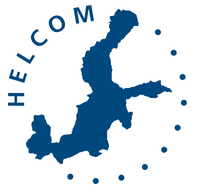An efficient and more transparent is now set up by the coastal countries for producing assessments online on Baltic-wide eutrophication, a major environmental threat to the sea. The new automatized process, exceptional in
environmental assessments, combines and calculates monitoring data such as on
nutrients, into resulting indicators and assessments. Moreover, the system incorporates an online review by nominated experts for improved quality check and transparency. The HELCOM assessment system, hosted by and developed together with the International Council for the Exploration of the Sea (), will provide straight access to up-to-date maps and country-wise data, to be released as part of the HELCOM Second Holistic Assessment of the Baltic Sea in 2017. Screenshot from the new Dataview. The new, more detailed information on the level of eutrophication in different basins of the Baltic Sea will enable much faster overall assessment of the status of the sea and the distance to Good Environmental Status, helping to make accurate management decisions for the benefit of the marine environment. The system pilots similar automated procedures foreseen by HELCOM for assessments of hazardous substances and biodiversity planned. The online , established for testing the new assessment process, is published for demonstration purposes and may be of interest by experts and managers in other sea areas affected by eutrophication in Europe and beyond. The site includes a of the data submissions, data stations and test indicator products, providing for documentation of the review. The dataview also shows details on country-specific submissions of data on eutrophication-related parameters – phosphorus, nitrogen, chlorophyll-a and Secchi depth – as well as assessment products. The automated assessment workflow is the main deliverable of the finalized 2-year HELCOM . Other outcomes include a concise assessment explaining all the protocols of the assessment, to be used by experts involved in the assessments as well as any party interested in learning details about the assessment methodology. The project has also developed forthcoming HELCOM on eutrophication and improved updating the existing ones; proposed how to combine assessment of coastal and open waters stemming from different legislative frameworks; proposed for improved usage of satellite data along with the in-situ samples collected from monitoring points; and suggested a method on harmonizing coastal and open-sea assessments, among others.Links * * *Note for editorsThe Baltic Marine Environment Protection Commission, usually referred to as , is an intergovernmental organization of the nine Baltic Sea coastal countries and the European Union working to protect the marine environment of the Baltic Sea from all sources of pollution and to ensure safety of navigation in the region. Since 1974, HELCOM has been the governing body of the ‘Convention on the Protection of the Marine Environment of the Baltic Sea Area’, more commonly known as the Helsinki Convention. * * *For more information, please contact:Vivi Fleming-LehtinenProject Manager, EUTRO-OPER (until end of 2015)Finnish Environment Institute – SYKETel: +358 50 5984238E-mail: vivi.fleming-lehtinen(at)environment.fi Johanna LaurilaInformation SecretaryHELCOMTel: +358 40 523 8988E-mail: johanna.laurila(at)helcom.fi
An efficient and more transparent work flow is now set up by the coastal countries for producing assessments online on Baltic-wide eutrophication.
